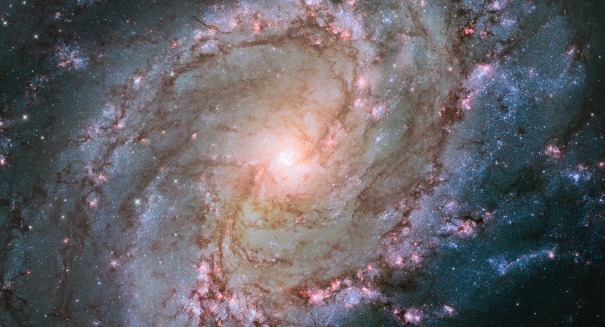
X-ray images taken by NASA telescope may be the "screams" of dead, "zombie-like" stars at the center of our galaxy.
The Nuclear Spectroscopic Telescope Array which NASA launched in 2012 recently discovered a mysterious glow of high-energy X-rays, which astronomers announced on Wednesday may actually be the “screams” of dead stars. While further research is still needed, NuSTAR investigators believe their findings may be “the beacons of a hitherto hidden population of pulsars” in the center of our galaxy.
When stars explode in a massive supernova blast, their collapsed remains become pulsars which emit beams of intense radiation. NASA researchers believe the X-rays which the NuSTAR telescope has been picking up are signals sent from those pulsars, which scientists often refer to as “cosmic lighthouses.”
“We may be witnessing the beacons of a hitherto hidden population of pulsars in the galactic center,” said co-author and NuStar’s principal investigator Fiona Harrison, who works with the California Institute of Technology in Pasadena. “This would mean there is something special about the environment in the very center of our galaxy.”
NuSTAR’s ability to image the galactic center in detailed, high-energy X-rays gives astronomers the ability to see a completely new component of the Milky Way, which is known to be filled with young, old and dead stars, all of which orbit around the Sagittarius A* black hole. Dead stars have the ability to suck in matter from their companion stars, and Harrison and her research team believe this “zombie-like” feeding process is what is causing the release of the X-rays they’ve been observing. However, the NuSTAR investigators admit that there are a number of other theories floating around, and explained in the journal Nature that they still need to make more observations to solve the mystery.
“This new result just reminds us that the galactic center is a bizarre place,” said co-author Chuck Hailey of Columbia University, with NASA Headquarters’ astrophysics division director Paul Hertz adding that “every time that we build small telescopes like NuSTAR, which improve our view of the cosmos in a particular wavelength band, we can expect surprises like this.”
In addition to helping solve the mystery of the source of the recently-discovered X-rays, NuStar also intends on offering astronomers opportunities to probe cosmic ray origins, study the extreme physics around collapsed stars, map microflares on the surface of the Sun, and learn more about supernovae and gamma-ray bursts during it’s two-year primary mission.